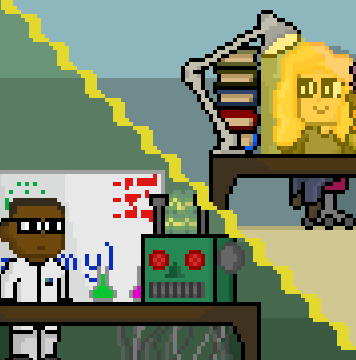Higher education should offer broader education
Sep 21, 2016
This weekend I visited my best friend, Kelli, at SIU Carbondale to see how the other half lives — that is, liberal arts majors. Day one: They seemed pretty normal. Day two: I had to leave, so no real conclusions could be made.
As a student pursuing engineering, I’m pretty much surrounded by nerdy geniuses that can probably build a robot from scratch while simultaneously reciting the first 6,000 digits of pi. It’s remarkably easy to get caught up in a whirlwind of complicated equations, mechanisms and whatever partial derivatives are.
As a wannabe scientist, that’s thrilling, but as someone who was considering majoring in English/Linguistics/Communication/Journalism/Psych (clearly, I have my life together) not that long ago, it’s exhausting.
For the most part, there seems to be a very real divide between the STEM and Liberal Arts majors. Whether it be playful teasing that engineers don’t have social lives (blatant truth) or that journalists are destined to a life of unemployment (as someone who likes this job, no comment), this major separation is ultimately detrimental.
During my senior year of high school, I learned about wavelengths in three different classes over the span of a month. In addition to my subsequent love of using tiny Greek variables, this made me really excited to see how all my classes connected together. Despite being about the same concept, it forced me to see it in different perspectives.
Get The Daily Illini in your inbox!
That’s what I figured college would be like, all the time. I thought I would learn about all the weird corners of academia, find random connections between gender and women’s studies and chemistry, and basically end up becoming that person everyone hates at parties. You know, that one that keeps talking about some random obscure topic like why there are five separate Altgeld Halls in five separate state universities at Illinois (fun fact: it’s because of Governor John Peter Altgeld).
Unfortunately, most of my days are far less eclectic and actually full of wondering how many Kit-Kat breaks is too many Kit-Kat breaks and how to do to a French exit without hurting my TA’s feelings.
This lack of interdisciplinary learning is bad for many of the same reasons diversity is important in the classroom. Diverse thought is valuable in any situation, educational or applicational, so that you can see its complicated facets as truthfully as possible. Often when discussing something, it’s easy to pigeonhole yourself into seeing only one perspective, which ultimately could end up stunting progress. When you have different ideas, visions and backgrounds with which to approach something, it can lead to creative thought and innovative solutions, which is beneficial for everyone.
Scott Duncan, a partner at Bain and Company, recently spoke at the University and talked about this. He said that when looking at the top CEOs today, you find that their backgrounds are often from different industries than the one they end up in. Their experiences in other industries give them unique lenses to find problems and solutions in their new ones.
This importance of interdisciplinary thinking should start in our education. Even if you’re topping your ECE classes, who knows how beneficial it might be to take a couple anthropology courses? Steve Jobs took calligraphy classes at Reed College, which most might think is useless, but it ended up being a defining part of the Apple interface.
“It was beautiful, historical, artistically subtle in a way that science can’t capture,” Jobs said. “It was the first computer with beautiful typography. If I had never dropped in on that single course in college, the Mac would have never had multiple typefaces or proportionally spaced fonts”.
Fortunately, a lot of college students already agree with Jobs. They understand the importance of taking a variety of classes to broaden your education, but are not always able to. I’m not sure about liberal arts majors, but engineering curricula are so jam-packed with STEM classes that it’s often near-impossible to fit any extra fun, different classes into your schedule.
I came into college excited at the prospects of having schedules that supplemented my engineering course load with creative writing and interpretative dance courses, but I can barely find time to fit a minor in.
I know this isn’t the University’s fault — the major I’ve chosen is intensive — but with so many students willing to learn and benefit from getting an interdisciplinary education, it’s a shame that it can’t be more easily achieved.
Shankari is a sophomore in LAS.






